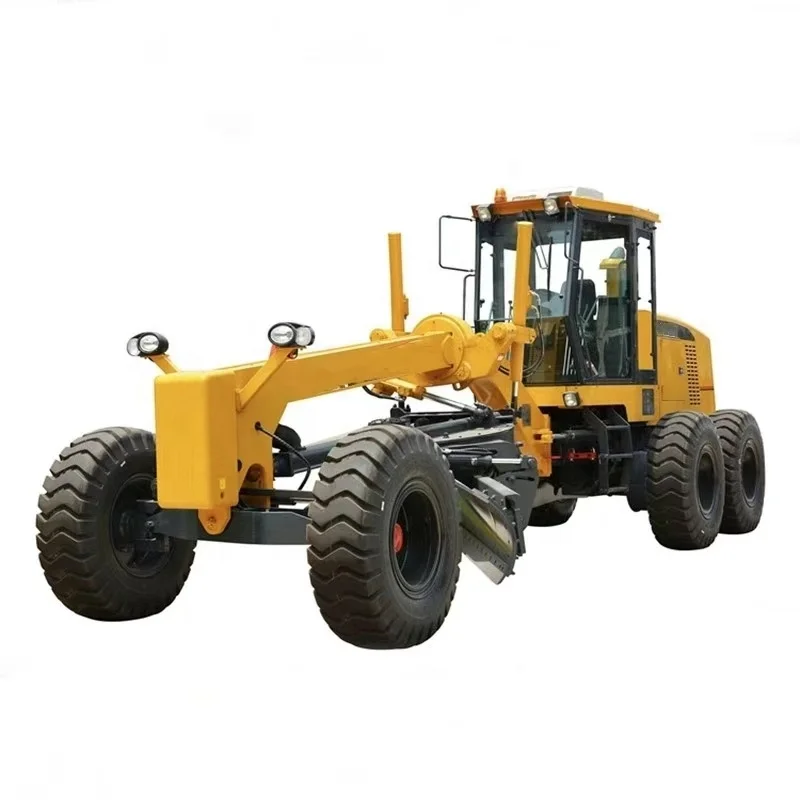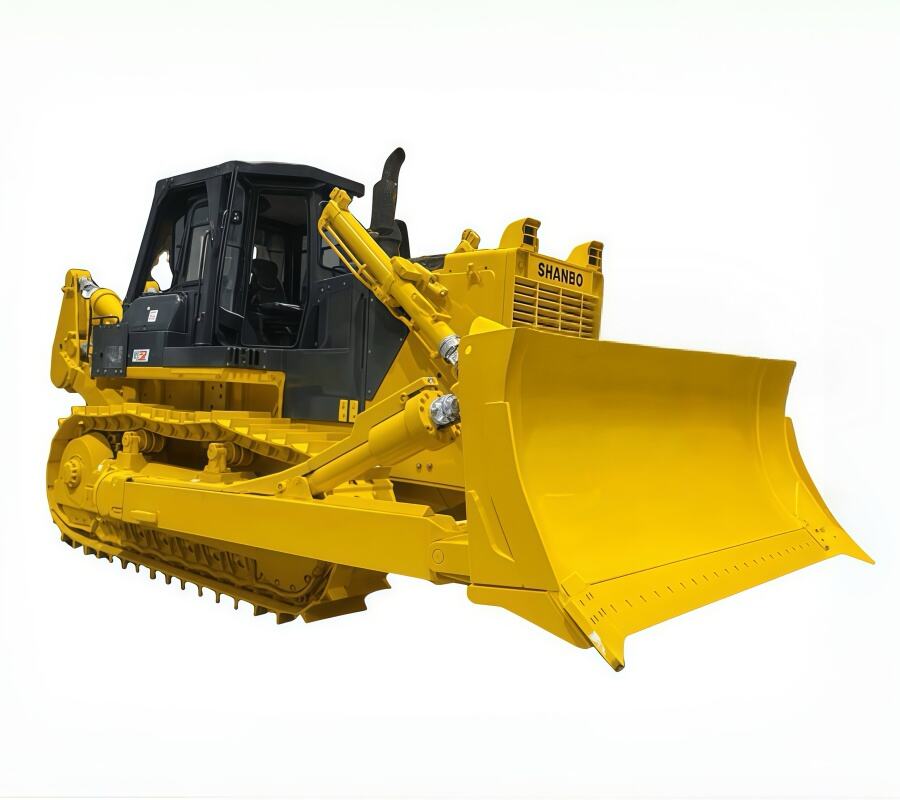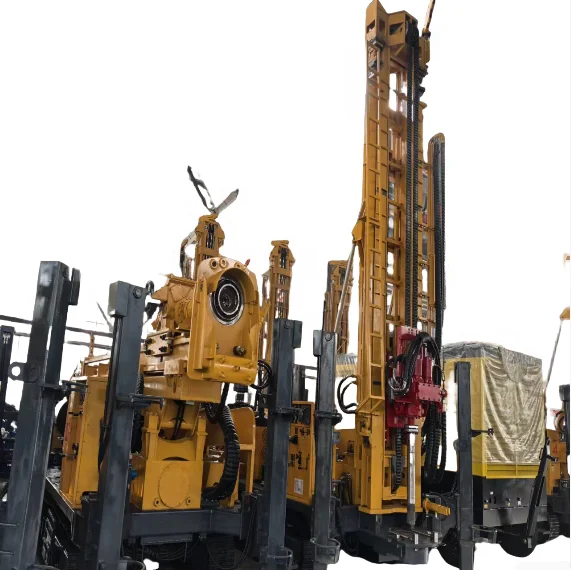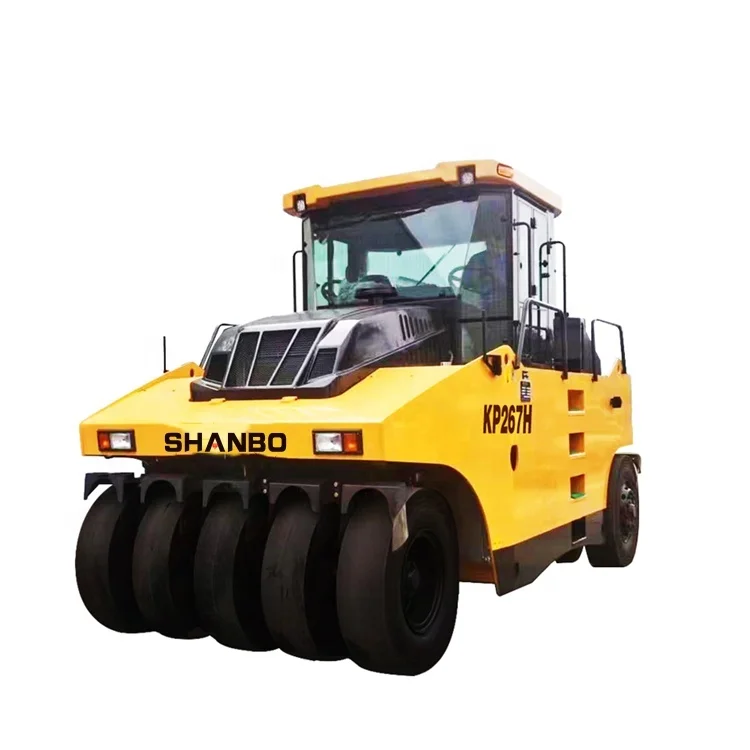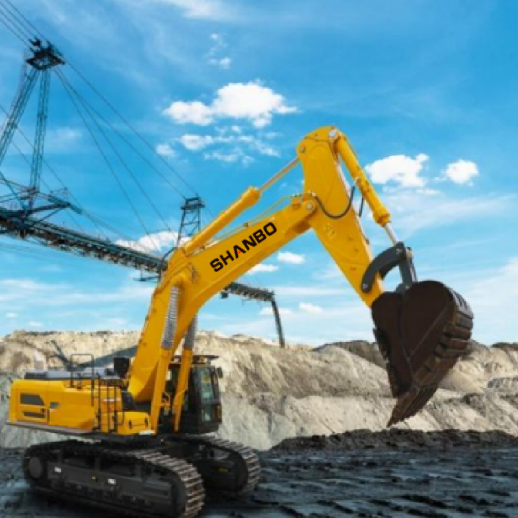What Are the Most Commonly Replaced Bulldozer Parts
Critical Bulldozer Components Requiring Frequent Replacement
Understanding the components of a bulldozer that require frequent replacement is vital for maintaining operational efficiency and productivity. These parts often experience significant wear due to the demanding conditions they operate under. Regular inspections and timely replacements can prevent costly downtime and ensure that the bulldozer continues to perform optimally at construction sites.
Shanbo is a leading manufacturer of bulldozers, committed to delivering powerful and reliable machinery for heavy-duty applications. In addition to producing complete bulldozer units, Shanbo also provides a comprehensive range of genuine replacement parts, ensuring seamless compatibility and consistent performance.
Undercarriage Wear Parts: Rollers, Idlers & Sprockets
Undercarriage wear significantly affects bulldozer performance and productivity, often attributing to over 50% of a dozer's maintenance costs. The roles of rollers, idlers, and sprockets are critical; they support the bulldozer's weight and assist in mobility.
Routine inspections every 250 operating hours can help identify wear patterns and allow for timely replacements. Studies have shown that maintaining these components can drastically reduce operational costs and maximize bulldozer efficiency.
- Rollers: Rollers are crucial for stabilizing the bulldozer during movement. Without them, the tracks wouldn't move as smoothly, and undue stress would be placed on the machine.
- Idlers: Positioned at the front and back of tracks, idlers manage tension, preventing track derailment and ensuring smooth operation across varied terrains.
- Sprockets: Utilizing engine power, sprockets facilitate the forward and backward movement of tracks, critical for maneuverability.
Track Chain Systems in Crawler Bulldozers
Track chains provide stability and traction in crawler bulldozzers, making them essential components. Regular inspections for track link wear every 500 hours can prevent catastrophic failures that could lead to costly repairs. Proper lubrication is also crucial; ineffective lubrication can reduce the track chain life by up to 40%. Ensuring these systems are well-maintained is vital for the bulldozer's dependability on demanding construction tasks.
- Inspection: Checking for wear and tear in track links can preemptively address issues before they escalate.
- Lubrication: Maintain lubrication levels effectively to ensure longevity of the track chains and enhance performance.
- Stability & Traction: Providing the necessary grip on varied terrains, track chains are instrumental in preventing slips and ensuring task precision.
Blade Cutting Edges and End Bits
The cutting edge and end bits of bulldozer blades undergo significant wear due to their constant engagement with the ground. Replacement of these components every 200-300 operating hours enhances the overall efficiency of the bulldozer. Utilizing different materials and hardfacing techniques can greatly extend their lifespan, some solutions offer a 60% increase in longevity. Appropriate maintenance of these parts ensures that the bulldozer's tasks are carried out smoothly.
- Wear-Due to Ground Engagement: Understand how much abrasion these components face, which necessitates consistent checks.
- Replacement Schedule: Timely replacements are recommended within the specified operational hours for sustained efficiency.
- Upgraded Materials: Explore hardfacing techniques and advanced materials to prolong the lifespan of blade components and maximize productivity.
Understanding the intricacies of these critical components and adhering to maintenance schedules inherently benefits performance and functionality, ensuring bulldozers continue to serve as reliable workhorses on any construction site.
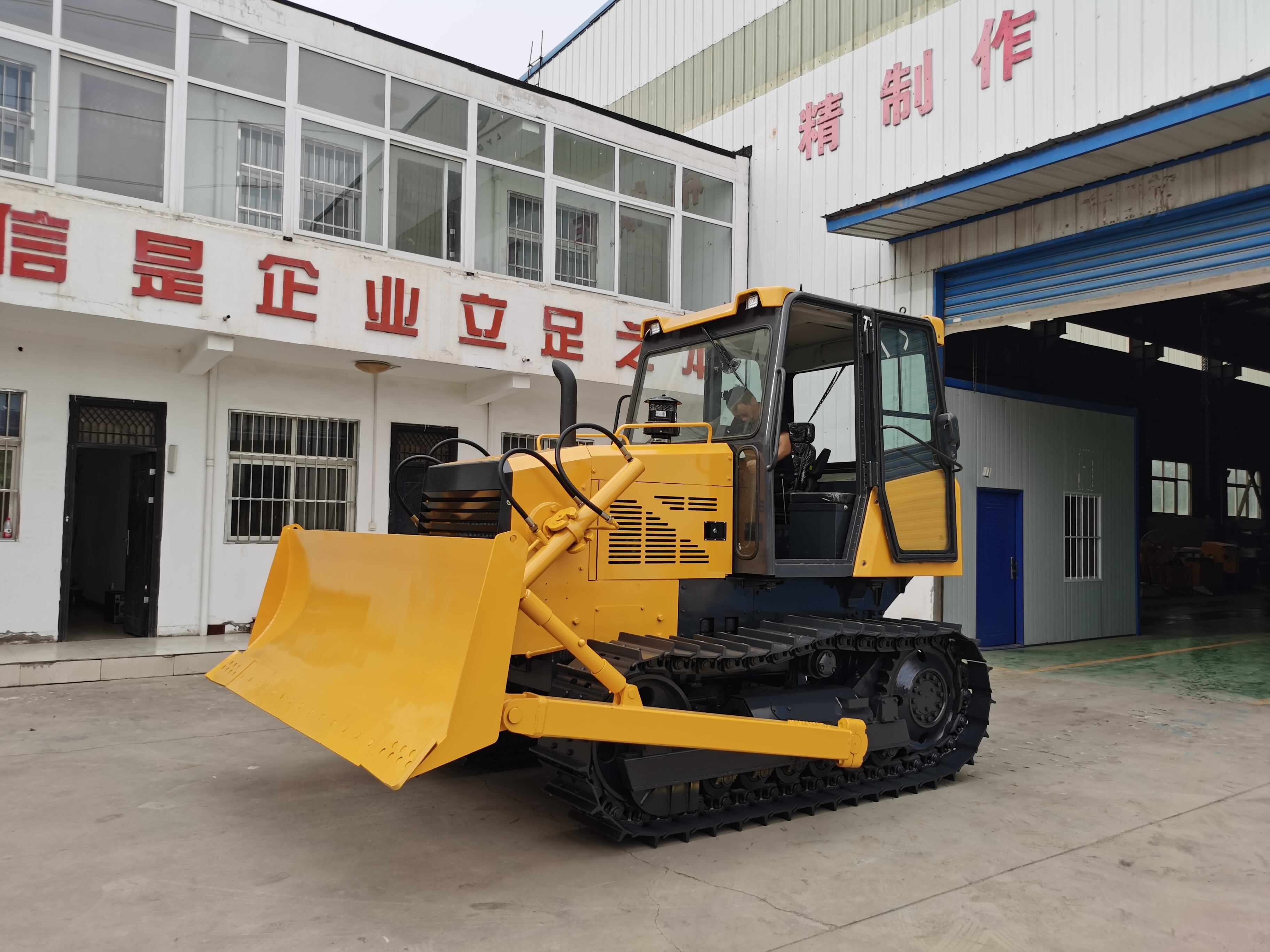
Hydraulic System Vulnerabilities in Dozer Operations
Cylinder Rebuilds for Blade Control Systems
Hydraulic cylinders are pivotal in enabling precise blade control in bulldozer operations. Studies indicate that nearly 30% of hydraulic system failures originate from issues with these cylinders, which underscores their importance in machinery reliability. To mitigate potential failures, hydraulic cylinders should be rebuilt every 5,000 operating hours, reducing downtime and extending the lifespan of the equipment.
Regular inspections are crucial; signs of leaks, external damage, or unusual operation could imply wear or more severe internal issues, necessitating urgent attention to maintain the efficiency of blade movements in various terrains.
Common Hydraulic Pump Failures
Hydraulic pump failures can lead to significant operational disruptions, resulting in costly repairs and prolonged downtime. These pumps are essential for generating the pressure needed to move hydraulic fluid through the system, and maintaining them is crucial to avoid complete machinery failure.
Regular filtration and fluid changes are vital preventive measures; research shows that approximately 75% of pump issues arise from dirt contamination. Implementing a maintenance schedule can notably enhance pump reliability, potentially cutting unexpected failures by 40%, thus safeguarding the bulldozer's overall functionalities.
Valve Assembly Maintenance Cycles
The maintenance of valve assemblies is a critical aspect of ensuring optimal hydraulic performance. These components regulate the flow and pressure of hydraulic fluid, directly affecting the bulldozer's attachments' functionality. Routine checks and maintenance every 1,000 hours are recommended to avert system losses and ensure consistent operational efficiency.
Replacing worn valves and making precise adjustments can lead to improved performance, with studies suggesting an operational cost reduction of up to 15%. Proper valve maintenance not only streamlines bulldozer attachments but also contributes to the machine's long-term reliability and effectiveness.
Understanding these hydraulic vulnerabilities allows us to leverage strategic maintenance to optimize dozer operations. Each aspect, from cylinder rebuilds to valve adjustments, plays a substantial role in maintaining the efficiency and lifespan of these complex systems. By addressing these vulnerabilities proactively, we can ensure a smoother and more cost-effective operational experience.
Engine Components With High Replacement Rates
Understanding engine components with high replacement rates is crucial to preventing frequent downtimes and ensuring optimal bulldozer performance. By addressing areas prone to wear and tear, operators can maintain efficiency and avoid costly repairs.
Turbocharger Failure Patterns
Turbochargers play an essential role in enhancing engine efficiency but often face issues related to overheating and contamination. To prolong their lifespan, regular inspection and cleaning every 250 working hours are advisable.
It has been observed that approximately 50% of premature turbocharger failures are due to oil contamination. Hence, monitoring boost pressure can provide insights into turbocharger health, as deviations often signal mechanical problems requiring attention.
Diesel Fuel Injector Lifespan
Diesel fuel injectors are vital for maintaining engine performance, and their lifespan typically ranges from 5,000 to 10,000 operating hours. Detecting early signs of injector failure, such as rough idling and increased smoke emissions, can prevent costly repairs. Recent industry analyses suggest that using various fuel additives can substantially improve injector lifespan by minimizing deposits and enhancing fuel performance.
Cooling System Overhaul Requirements
Efficient cooling systems are indispensable for managing engine temperatures, and frequent failures often necessitate system overhauls. Preventing corrosion and build-up, which can lead to overheating, hinges on replacing coolant every two years.
Proactive maintenance of cooling systems has been shown to reduce engine overheating incidents by up to 60%, according to recent analyses. Regular inspections and replacements can safeguard the system's functionality, thereby ensuring optimal engine performance.
Understanding and maintaining these critical components—turbochargers, fuel injectors, and cooling systems—ensures that bulldozers continue to operate efficiently, minimizing downtime and maximizing productivity. Integrating routine checks into maintenance schedules can prolong the life of these components and reduce replacement costs.
Tracked Bulldozer Undercarriage Maintenance
Impact of Ground Conditions on Track Shoes
Track shoe wear is heavily influenced by ground conditions; rocky, uneven terrain can dramatically accelerate wear rates. Regular evaluation of these conditions is vital as it helps identify wear patterns early, facilitating timely replacements.
Studies indicate that proper monitoring can reduce repair expenses by up to 25%, making it a cost-effective measure for maintaining bulldozer efficiency. Additionally, selecting track shoes with materials tailored to specific ground conditions can optimize performance, resulting in longer-lasting bulldozer equipment.
Sprocket Tooth Wear Analysis
Sprocket teeth are essential as they engage with the bulldozer's track, and analyzing sprocket wear is crucial for preventing potential failures. It is recommended to inspect sprocket tooth wear every 500 operating hours, as significant wear patterns can reveal misalignment or mechanical issues.
By aligning sprocket replacement intervals with regular undercarriage maintenance schedules, we can ensure continuous reliability of the crawler bulldozer, minimizing downtime and repair costs.
Adjusting Track Tension Systems
Correct track tension is vital to maximize bulldozer efficiency; improper tension—either too loose or too tight—can cause component damage. As part of routine maintenance, adjusting track tension every 50 operating hours ensures optimal performance by maintaining tension within prescribed parameters.
This proper maintenance not only extends the life of the entire bulldozer assembly but also prevents costly repairs, ensuring the bulldozer remains operational and productive across various terrains.
Ripper Assembly Wear Patterns in Large Bulldozers
Shank Replacement Intervals
Shank wear directly impacts the ripping efficiency of a large bulldozer, necessitating regular replacement intervals. It's crucial to monitor the wear patterns to determine these intervals, which ideally should not exceed 1,000 operating hours.
This proactive approach in replacing worn shanks ensures optimal operational efficiency and minimizes potential downtime. Additionally, timely replacement of the shank reduces the risk of more extensive wear on ancillary components, which can lead to costly repairs.
Ripper Tip Hardfacing Techniques
Hardfacing techniques significantly enhance the durability of ripper tips, allowing them to withstand demanding conditions. These techniques involve applying a hard alloy to the tip, which has been reported to extend service life by up to 50% compared to standard tips.
Companies adopting advanced hardfacing materials can further boost performance, ensuring the ripper maintains its effectiveness over longer durations. The result is improved operational productivity and reduced replacement costs, crucial for maintaining a competitive edge in heavy-duty tasks.
Mounting Frame Stress Points
Evaluating stress points on the mounting frame is vital to prevent significant failures in the ripper assembly. Regular stress tests, recommended every 500 operating hours, help assess the frame's integrity and identify potential weak points. By addressing these stress points early, bulldozer operators can significantly prolong the lifespan of the ripper assembly, enhancing reliability and performance.
Furthermore, consistent monitoring and maintenance of stress points ensure that the bulldozer operates smoothly, safeguarding against unexpected breakdowns and costly repairs.
Preventative Maintenance for Costly Repairs
Fluid Analysis for Early Failure Detection
Fluid analysis is an essential tool for maintaining bulldozer efficiency and longevity. By focusing on critical components like engines and hydraulic systems, operators can detect potential issues before they lead to serious problems.
Regular testing has been shown to reduce failure occurrences by 20-30%, according to industry reports. This proactive approach not only reduces downtime but also minimizes long-term repair costs, allowing businesses to maintain productivity and avoid unforeseen expenses.
Undercarriage Component Rotation Strategies
Implementing a strategic rotation plan for undercarriage components such as rollers and idlers can significantly extend their lifespan. According to some reports, this strategy can increase the lifespan by up to 50%, offering substantial cost savings.
A well-organized rotation strategy ensures even wear and lessens the likelihood of sudden failures that could halt operations. It's advisable to log rotation practices and repeat them every 500 operating hours for optimal results, ensuring your bulldozer equipment remains efficient and reliable.
Operator-Driven Wear Reduction Practices
Training operators in best practices is a key factor in reducing equipment wear and extending its lifespan. Effective maneuvering techniques can lower wear rates by up to 15% on average, highlighting the importance of operator skill in preventing unnecessary equipment damage.
Encouraging regular feedback and maintenance logs from operators facilitates the early identification of emerging issues, thus promoting timely interventions and further preventing costly repairs. The role of an informed operator cannot be underestimated in maintaining bulldozer efficiency and reducing repair frequency.
OEM vs Aftermarket Parts Cost-Benefit Analysis
Genuine Undercarriage Longevity
Investing in Original Equipment Manufacturer (OEM) parts for bulldozer applications ensures enhanced durability and reliability. These parts, specifically tailored to fit bulldozer equipment, have a proven track record of lasting longer, often outlasting aftermarket parts by 20-30%. This longevity means fewer interruptions and replacements, which translates to lower long-term costs.
Although OEM parts might be more expensive upfront, they negate the chance of voiding warranties and reduce the total cost of ownership over time, making them a wise investment for any operation focused on efficiency and reliability.
Aftermarket Sprocket Compatibility Risks
When considering cost-saving strategies, some turn to aftermarket parts, such as sprockets. While these can offer initial savings, the risk of sourcing inconsistencies can lead to compatibility issues, which in turn compromise performance. This incompatibility can cause undue wear and increase the necessity for frequent replacements, ultimately escalating long-term maintenance costs.
Adhering to OEM specifications ensures seamless integration with existing components, thereby safeguarding against unexpected repair costs and maintaining the bulldozer’s optimal performance.
Rebuilt Final Drive Reliability Factors
Rebuilt final drives present a cost-effective alternative, yet their reliability heavily hinges on the quality of the rebuild and the provider's reputation. While reputable suppliers may offer warranties for rebuilt parts, others might lead to frequent failures and increased costs.
Before opting for a rebuilt solution, it's crucial to thoroughly evaluate the supplier's track record, as the reliability of these parts can significantly impact bulldozer performance and operational costs. Issues arising from poorly rebuilt drives can lead to downtime and higher repair expenses, underscoring the importance of selecting a reputable provider.
Conclusion
In summary, the selection of bulldozer parts impacts both maintenance and replacement strategies. When deciding between OEM and aftermarket options, it’s crucial to weigh the immediate and long-term effects on machine performance. OEM parts often ensure superior durability and operational efficiency, whereas aftermarket parts might present initial savings but lead to further expenditures due to compatibility issues. Therefore, investing in quality parts can reduce downtime and extend the lifespan of your equipment, ultimately ensuring more reliable functioning and cost-effective maintenance over time.
Recommended Products
 Hot News
Hot News
-
“Water Savior” 200 m Reverse Circulation Water Well Drills Arrive in Uzbekistan
2025-03-28
-
What Is a Bulldozer? Everything You Need to Know
2025-02-18
-
How to Operate a Bulldozer in Different Terrain Types
2025-04-24
-
How Much Does a Bulldozer Weigh and How Does It Affect Performance
2025-04-23
-
Factors to Consider When Selecting a Construction Equipment Supplier
2025-04-22
-
What Are the Most Commonly Replaced Bulldozer Parts
2025-04-21
